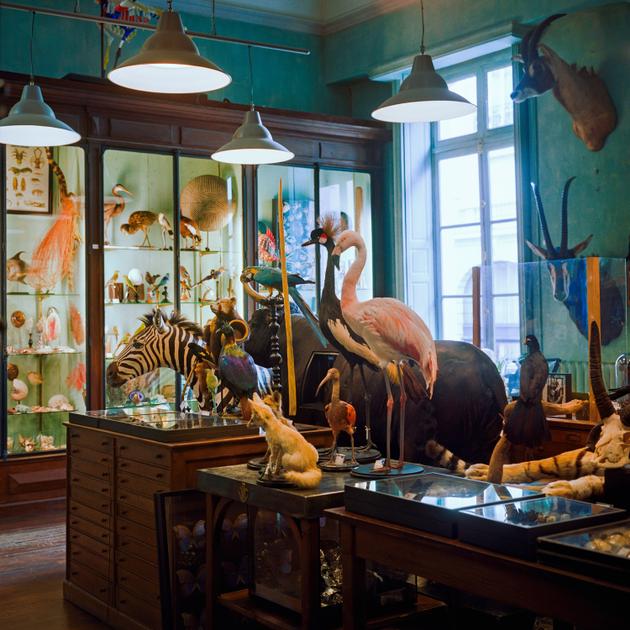


Stepping inside Paris's historic taxidermy paradise
FeatureWith its framed butterflies, insects in glass domes and mounted animals, the Deyrolle store has been delighting enthusiasts of all ages and artists in search of inspiration for almost two centuries. True to its credo of combining nature, art and education, its owner, Louis Albert de Broglie, is striving to diversify the institution's activities.
Napoleon almost didn't make it. Placed on the repair desk, frozen in a prone position, this mounted dachshund should have ended up in the garbage can after its owner's death, but the heir preferred to take the damaged animal to the only place in Paris where he had a chance of giving it away: Deyrolle, one of Europe's oldest cabinets of curiosities. In the store at 46 Rue du Bac, the second floor resembles a natural history museum.
Between two display cases of crustaceans and fossilized minerals, a lion watches over the assembly. The tiger lies down, a cheetah seems to advance under the heads of deers. A bear and her cub move away from a camel. The crocodile no longer threatens anyone. A crested hen has the head of a comic strip character. Budgies are perched next to a Gouldian finch or a Blue-llied Roller. At the far end, lepidopterans number in the thousands, next to iridescent beetles.
There are also spiders, dried fish, snakes coiled in jars, shells, opened lobsters, multicolored rocks, meteorites and shards of Mars. Not forgetting turtle skeletons, skulls and jaws; composed nature scenes under a globe; butterfly trees; art books; educational works; and reprints of the famous educational posters that made the company a success in the late 19th century.
Deyrolle offers a repair shop for small pieces of taxidermy deteriorated by parasites or simply over time, which is barely concealed behind an enormous bull. Most of the time, the animals are reclaimed by those who drop them off. But others, like Napoleon, are brought here to stay, either because their owners no longer know what to do with them or because they are rare specimens, well preserved or simply interesting to observe. Carefully selected, some will join the collections of the business, a veritable institution soon to celebrate its bicentenary.

Two centuries of existence – history is another reason for the place's originality. It was in 1831 that Jean-Baptiste Deyrolle, taxidermist at the Musée des Sciences Naturelles de Lille and entomology enthusiast, set up shop in Paris. His son, Achille Deyrolle, an avid traveler, took over the business at 23, at Rue de la Monnaie, where he developed the trade in insects and animals he brought back from distant continents. Like his father, he was fascinated by taxidermy, and in 1839, he became one of the first to naturalize an elephant from Ceylon (now Sri Lanka), known for her unruly temperament. Miss Djeck, from her circus name, is still one of the celebrities of the Musée d’Histoire Naturelle de Tourna, Belgium.
You have 85% of this article left to read. The rest is for subscribers only.
